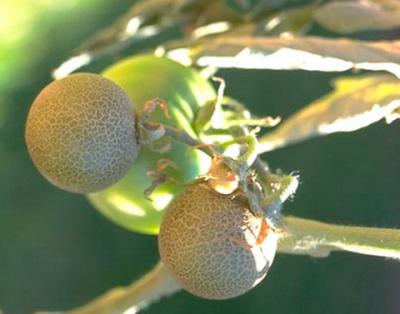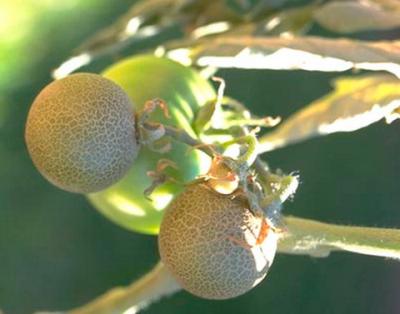

Tomato russet mite (Aculops lycopersici)
They are very tiny, approximately 0.2 mm long, and cannot be seen with the naked eye. They are yellowish, brown or pink. They have a ringed conical body with the head and two pairs of legs at the large end. They complete the lifecycle in 1 week; this explains the rapid increase of this mite in tomato fields. They prefer high temperatures and low humidity. They feed on all above-ground parts of the tomato plant, causing spotting, twisting or folding of leaves and fine cracks on the fruits. Attacked leaves and stems develop a greasy appearance and turn bronzed. The plants can drop their leaves, especially in hot weather. Fruits are then exposed to sunburn. Damage to the plant typically begins near the ground and spreads upwards. Damage can develop very rapidly, and the mites can kill plants in a few days in dry hot weather. Since the mite cannot be seen, the symptoms are easily confused with diseases. The small size of the mites makes monitoring difficult. The first signs of mite presence are the curling and bronzing of the lower leaves of the stem.
- Conserve natural enemies. Few natural enemies of the tomato russet mite are known. Predatory mites are considered to be the most important natural enemies. However, the effect of these natural enemies is hampered by extensive use of pesticides.
- Spray neem extracts. Neem oil and aqueous neem kernel have been reported to give good control of this mite in Costa Rica. For more information on Neem extracts click here.
- Ensure proper irrigation during early stages of the crop. This can help prevent mite build-up later in the growing season since tomato russet mite infestation is higher on tomato plants under water stress.
- No resistant varieties are available. In Kenya, tolerance to leaf damage was observed in two varieties, namely "Early Stone" and "Beauty".
